
Lutetium is a chemical element with the symbol Lu and atomic number 71. It is a silvery white metal, which resists corrosion in dry air, but not in moist air. Lutetium is the last element in the lanthanide series, and it is traditionally counted among the rare earths. Lutetium is sometimes considered the first element of the 6th-period transition metals, although lanthanum is more often considered as such.
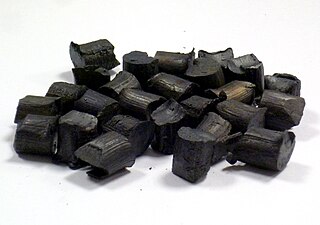
Mischmetal (from German: Mischmetall – "mixed metal") is an alloy of rare-earth elements. It is also called cerium mischmetal, or rare-earth mischmetal. A typical composition includes approximately 55% cerium, 25% lanthanum, and 15-18% neodymium with other rare earth metals following. It contains 95% lanthanoid and iron 5%. Its most common use is in the pyrophoric ferrocerium "flint" ignition device of many lighters and torches, although an alloy of only rare-earth elements would be too soft to give good sparks. For this purpose, it is blended with iron oxide and magnesium oxide to form a harder material known as ferrocerium. In chemical formulae it is commonly abbreviated as Mm, e.g. MmNi5.

Carl Auer von Welsbach, who received the hereditary title Freiherr von Welsbach was an Austrian scientist and inventor, who separated the ore didymium into the elements neodymium and praseodymium in 1885. He was also one of three scientists to independently discover the element lutetium, separating it from ytterbium in 1907, setting off the longest priority dispute in the history of chemistry.
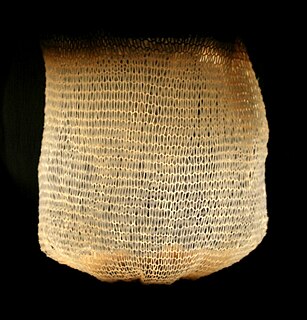
An incandescent gas mantle, gas mantle or Welsbach mantle is a device for generating bright white light when heated by a flame. The name refers to its original heat source in gas lights, which filled the streets of Europe and North America in the late 19th century, mantle referring to the way it hangs like a cloak above the flame. Today it is still used in portable camping lanterns, pressure lanterns and some oil lamps.

Didymium is a mixture of the elements praseodymium and neodymium. It is used in safety glasses for glassblowing and blacksmithing, especially with a gas (propane)-powered forge, where it provides a filter that selectively blocks the yellowish light at 589 nm emitted by the hot sodium in the glass, without having a detrimental effect on general vision, unlike dark welder's glasses. The strong infrared light emitted by the superheated forge gases and insulation lining the forge walls is also blocked thereby saving the crafters' eyes from serious cumulative damage such as glassblower's cataract. The usefulness of didymium glass for eye protection of this sort was discovered by Sir William Crookes.

Ferrocerium is a synthetic pyrophoric alloy that produces hot sparks that can reach temperatures of 3,000 °C (5,430 °F) when rapidly oxidized by the process of striking the rod, thereby fragmenting it and exposing those fragments to the oxygen in the air. This property allows it to have many commercial applications, such as the ignition source for lighters, strikers for gas welding and cutting torches, deoxidization in metallurgy, and ferrocerium rods. Due to ferrocerium's ability to ignite in adverse conditions, rods of ferrocerium are commonly used as an emergency combustion device in survival kits.
Lutetium(III) oxide, a white solid, is a cubic compound of lutetium sometimes used in the preparation of specialty glasses. It is also called lutecia. It is a lanthanide oxide, also known as a rare earth.
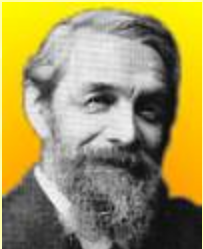
Georges Urbain was a French chemist, a professor of the Sorbonne, a member of the Institut de France, and director of the Institute of Chemistry in Paris. Much of his work focused on the rare earths, isolating and separating elements such as europium and gadolinium, and studying their spectra, their magnetic properties and their atomic masses. He discovered the element lutetium. He also studied the efflorescence of saline hydrates.
Auer is a surname. Notable people with the surname include:

Althofen is a town in the district of Sankt Veit an der Glan in the Austrian state of Carinthia.
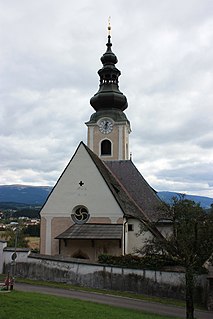
Mölbling is a municipality on the Gurk River in the district of Sankt Veit an der Glan in the Austrian state of Carinthia.

Alois Auer was a printer, inventor, and botanical illustrator, most active during the 1840s and 1850s. He produced a number of works in German and other languages, including the first regarding the nature printing process. He was the director of the Austrian State Printing House, which created illustrated volumes of scientific interest and produced many advances in printing technology. His name, in the full title of the hereditary knighthood he was given, is Alois Auer Ritter von Welsbach.
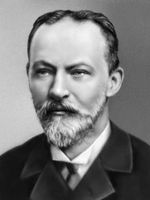
Bohuslav Brauner was a Czech chemist from the University of Prague, who investigated the properties of the rare earth elements, especially the determination of their atomic weights. Brauner predicted the existence of the rare earth element promethium ten years before its discovery.

Karl Kordesch was an Austrian chemist and inventor, most notable for jointly inventing the alkaline battery.
Auerlite is a rare North Carolina mineral variety, remarkably rich in thoria, named after Carl Auer von Welsbach, the inventor of the Welsbach incandescent gas mantle. It is considered to be a phosphorus bearing variety of thorite.
Welsbach seeding is a patented climate engineering method, involving seeding the stratosphere with small metal oxide particles. The purpose of the Welsbach seeding would be to "(reduce) atmospheric warming due to the greenhouse effect resulting from a greenhouse gases layer", by converting radiative energy at near-infrared wavelengths into radiation at far-infrared wavelengths, permitting some of the converted radiation to escape into space, thus cooling the atmosphere. The seeding as described would be performed by airplanes at altitudes between 7 and 13 kilometres.
Articles on Welsbach include:










